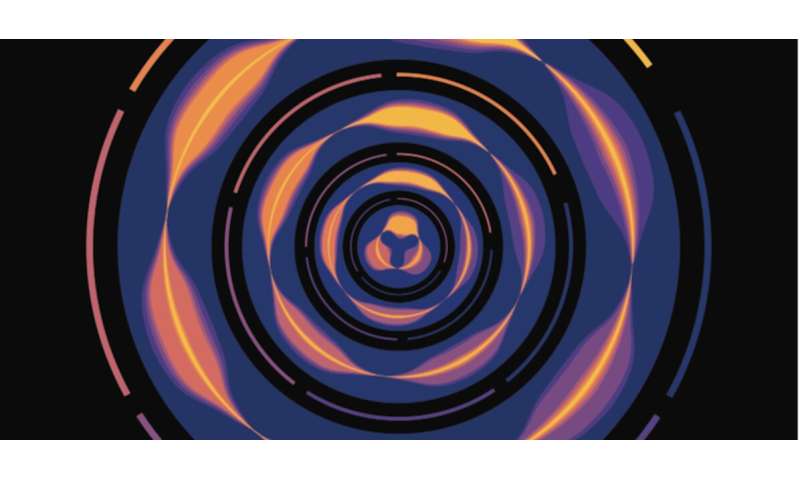
Computational models developed by USC researchers show adaptively controlling tumor cell populations to keep them in competition can more effectively treat cancer.
Evolutionary theory is at the crux of civilization, from the trees that populate our forests to the animals in our backyards. Little by little, over time, we see species that adapt to the given environment survive, while others, which fail to find ways to thrive, tend to decline.
Cancer cells are no different, USC researchers say. A team, including Paul Newton, professor in the USC Viterbi Department of Aerospace and Mechanical Engineering, Mathematics, and the Ellison Institute for Transformative Medicine, is working on developing computational models that focus on Darwinian evolution principles to control tumor growth.
This research, published in Cancer Research, is a collaboration between Newton and a team including Jeffrey West, Jingsong Zhang, Robert A. Gatenby, Joel S. Brown and Alexander R.A. Anderson in the Integrative Mathematical Oncology Department at the Moffitt Cancer Center in Tampa, FL, where Newton’s former Ph.D. student, West, is a post-doc.
“Tumors are made up of a heterogenous collection of cell types, all competing for resources, with varying degrees of chemo-resistance,” Newton said. “Our models use evolutionary game theory to design treatment schedules that adaptively control the competition without letting a resistant species take over, which often happens with the strategy of killing as many tumor cells as possible as quickly as possible. Evolution matters.”
This type of adaptive cancer treatment, Newton said, is similar to when DDT, an insecticide, was used to kill a dominant pest. The result: it inadvertently “selects” for a resistant pest. Instead, it was discovered that a more effective treatment was to use multiple chemicals on different schedules, keeping the pests in competition.
The same is true of cancer cells. The ones that persist post-treatment tend to be those that are resistant to cancer treatment. Instead, Newton said, keeping all the tumor cells in competition with each other could allow for more sustainable, long-term results. “But achieving that is not simple and requires that we know the make-up of the tumor as it changes and then adjust the toxins in response,” he said. “Our approach lays out the general principles for achieving this and tests the approach retrospectively.”
“Different cells have different levels of sensitivity and resistance to different cancer drugs. With multiple drugs, different dosing levels and timing, we are developing tools to control the various species of cancerous cells in a tumor and reduce the likelihood of chemo-resistance,” Newton said. The first step in measuring how this could work, Newton said, is by modeling such adaptive therapy scenarios using mathematical models and computer simulations.
Drug resistance and new models of treatment
Early in the treatment cycle, cancer patients might demonstrate a strong response to the continuous use of a maximum dose of one drug. However, over time, research has shown eventually many patients develop drug resistance and their tumors recur. “Sometimes, when a tumor develops resistance to one drug, the cells become more susceptible to another drug,” Newton said. “Cycling two or more drugs sequentially is a way to combat this. But the way to design the best schedules and dosing using multidrug combinations is not at all clear, especially in the context of an evolving tumor.”
As a retrospective case study, the team studied prostate cancer stem cells. In contrast to previous mathematical models, the team created a model that simulates and predicts the dynamics of three different factors during intermittent adaptive drug therapy: the prostate cancer cells, differentiated cancer cells and the biomarker prostate-specific antigen (PSA), which is used for the screening and diagnosis of prostate cancer.
In their study, the researchers demonstrated that patients who are chemo-resistant are more likely to have stem cells with higher rates of self-renewal, leading to higher levels of prostate cancer stem cells and changing levels of the biomarker PSA during each treatment cycle. The computational models developed by the researchers, combined with previously collected patient-specific data, demonstrated a high accuracy in predicting the development of chemo-resistance. Then, using new schedules developed computationally, they show how their proposed multidrug adaptive schedules would work quite far into the future.
This adaptive approach means that each patient’s treatment would be truly personalized on the basis of the tumor’s state and response rather than a one-size-fits-all fixed treatment regime. Said Newton: “Treatments can help control and even steer the evolutionary dynamics of the tumor to where it finds itself cornered.”
Source: Read Full Article